Review: LG Muziq
Jul 20, 2007, 2:12 PM by Eric Zeman
Sprint offers an updated music phone with the slim LG Muziq. Does it hit the high notes, or fall flat? With Video Review.
Form
Is It Your Type
The LG Muziq is undoubtedly the second generation Fusic, albeit with a slightly different name. While the Muziq does many of the same things as its predecessor, the hardware is different enough to set it apart. But does updated hardware mean it is a better phone? Let's find out.
Body
Putting the Muziq and Fusic side by side shows just how different they truly are. The Muziq is thinner, wider, and longer than the Fusic, but because it loses the external antenna, the Muziq feels like it has a smaller overall footprint. Gone is the white-ish plastic with interchangeable color panels. Instead you'll find a glossy, black form that sort of resembles the Black Obelisk from 2001: A Space Odyssey. Dark. Mysterious. Full of wonder...maybe. Where the Fusic had some serious Fischer Price overtones, the Muziq is classier and more elegant.
Its thin form and slightly rounded edges make the Muziq easy to hold in your hand. It feels lightweight and comfortable. It is weighted very evenly, and when holding it open it is well balanced. Because the whole phone is covered with a smooth glossy exterior shell, it slips into and out of your jeans pockets very easily (unless you're pulling some serious 80s-esque Jordache action). As nice as this exterior shell is, it has a propensity for attracting (anyone...anyone...Bueller?): smudges. Both the front and the back show fingeroil grime readily. But the Muziq is certainly not alone in this regard.
Comparing the front of both phones, the Muziq has a larger exterior screen than the Fusic that is placed lower on the phone. The camera has also been moved from the back to the front. The physical music control buttons on the Fusic are replaced with a touch-capacitance control pad instead. When you use the new circular music control pad, the Muziq sends micro vibration pulses through the phone. This lets you know that you've pushed the buttons, which light up with red icons when the keypad is unlocked. The control pad is surrounded with a silver ridge to keep your thumb on target. The pad itself is smooth, though, and unless you are looking at it, it can be hard to tell exactly where your thumb is. Every now and then I found myself hitting the play/pause button, rather than the fast-forward button.
Digging your finger nails under the headset jack and power port covers on the right side of the phone is easy enough. The headset jack accepts 2.5mm headsets only, meaning it isn't compatible with regular headphones. Inserting and retrieving microSD cards was not an issue. The camera and music buttons are also found on the right side of the phone, but are oddly placed on the top half of the phone. This isn't a problem when the phone is closed. Using them is easy. But when open, they are up out of easy reach. Luckily, these buttons are duplicated on the interior keypad. Duplicating the buttons seems to be a waste of effort, though. Why not just make the ones on the side of the phone more usable?
Similarly, the volume rocker on the left is also placed on the top half of the phone. Adjusting the volume with the phone closed is a snap. But when open, it is practically unusable - and i don't think we've described volume keys like that before. You have to reach your finger way up to reach it. It feels awkward and unnatural.
The battery cover is easy to remove and replace, and the battery slips in and out of its berth without issue. There is a small hump/bulge along the bottom of the Muziq where the antenna is located. It is barely noticeable when you hold the phone in your hand, but is visible if you look at it from the side.
When you open up the Muziq, you are greeted with a completely different interior when compared to the Fusic. The display is larger and set into a black frame. The keypad is vastly changed. Where the Fusic has individual white buttons set into a silvery background, the Muziq has one large, black keypad that is smooth save for some ridges to separate the keys from one another. This is a welcome improvement. The keys are larger, easier to press, and provide better feedback to let you know that they've been pressed. Each one has just the right amount of travel and "click." It is also a comfortable size, neither too large or too small for easy and quick text or number entry.
In all, the Muziq is more attractive than the Fusic, and interacting with the keypad is a lot easier. These are major improvements. There are still a few fumbles, though.
The Three S's
Screen
The exterior screen of the Muziq is an average size. Loading a real picture as the background wallpaper lets you see that it has decent resolution and good color representation. It was mostly viewable outdoors, though direct sunlight challenged it a little bit. The icons were readable, but could have been sharper. Same goes for the interior screen. Colors all perform well, and it was readable outdoors, but there was digital artifacting and the icons could have been sharper.
Signal
If there's one thing the Muziq did exceptionally well in most places, it was to hold onto a signal. The only place it had less than 5 full bars of coverage was in my basement, where it dropped to no coverage or one bar. Driving through the Lincoln Tunnel, the Muziq maintained 5 bars and a data call with no problems. When compared side-by-side with another Sprint phone that had only one bar, the Muziq had 5. It also survived the NJ vault test.
Sound
Call quality of the Muziq was good. The earpiece was acceptably loud for most environments. Conversations were easily heard in a loud coffee shop. Not so much so in a bar with music playing, but we were able to make out enough of the conversation that we weren't forced outside. There was some hiss and crackling on occasion, but most conversations were free of noise. When used for listening to music, the external speaker sounded slightly muffled, as if a tiny sock had been stuffed into the speaker cavity. But it wasn't thin or tinny. For speakerphone calls, it was amply loud. The quality of music streamed via Bluetooth to stereo headphones gave us no reason to complain, but it didn't excite our audiophile genes, either.
Battery
The Muziq performed well in battery tests. No matter how much or how little we used it, it seemed to always need more juice every 4 days. Even heavy Web browsing, texting, music downloading and video streaming didn't effect battery life overly much, sapping perhaps one day from the time between charges. Bluetooth, however, drained battery life noticeably, and could kill it in two days.
Basics
Menus
The Muziq makes use of several different menu systems depending on the theme you choose for the phone. The default theme appears to be the "Muziq" theme, which offers you an image of someone rocking out with their phone on the home screen as in an iPod commercial. There are 4 menu shortcuts along the left side of the screen. They are the Main Menu, On Demand, Music and Send Text. They do pretty much what they say they do. There are also two function key shortcuts to your list of favorites on the left and your contacts on the right.
When diving into the main menu, you are greeted with the standard grid layout of 12 selections. These let you access all the features of the phone. With the "Muziq" theme running, the icons are all black and white and when you pass over them, they jump out in color. No slick animations here, but they are certainly functional. Some of the selections are applications, such as the music player or camera, and others are folders, such as the settings or tools folders. These folders open up numerical lists of functions that you can select. From the Settings and Tools folders, you can adjust most of the features that you'd expect to be able to personalize on a phone.
Of the four shortcuts on the home screen, one is for Sprint's On Demand application, which acts like a widget. When you scroll over the icon, a small bubble pops up with the top headline and current weather conditions. Selecting it brings you into the application, where you can make adjustments to location, and see more news, sports and other headlines.
The favorites key takes you a list of shortcuts for specific applications or actions. The first 5 are pre-assigned, but you can customize the remaining shortcuts to the exact actions you want.
The iPod picture is part of the theme, so if you don't like the picture on the home screen, and decided to change it, the Muziq automatically changes the theme to the "LG" theme. This theme loses the 4 home screen shortcuts and leaves it black, just showing your new wallpaper / screensaver.
In all, though, there are no surprises with the menu system and it is easily navigated and used.
Calls/Contacts
Calling and contact features of the Muziq work as expected. Hitting the green send key from the home screen will take you to a list of all recent calls. You can sort your recent calls by accessing them through the calling log. You have more options to manage your calls when in the full menu.
Hitting the right function key takes you to a screen that is optimized for finding or adding a contact. The cursor automatically appears in a search bar. Typing in the first few letters of a contact's name will auto sort them and bring up the contact or contacts whose names match those letters. There is also a highlighted "new entry" selection. Hitting the center of the D-pad in this contact menu automatically initiates adding a new contact. You can add up to 5 different phone numbers for each contact, an email address, set ringtones, photo ID, assign groups and add notes or a URL.
Once you open a saved contact card, you can scroll through your contacts by using left or right on the D-pad. This prevents you from having to go out to the contact list. Selecting any of the contacts brings up a menu, from which you can initiate calls, messages and more.
If you jump into the contacts center from the main menu, you have a short little menu of action items from which to choose. The first takes you to the above mentioned screen and is followed by sorting speed dials, groups, and lets you view information about your phone.
Messaging
The Muziq's messaging features stand shoulder to shoulder with other mid-level devices. Unless you assign a shortcut in the favorites list, the only way to get into the messaging department is to hop into the main menu. Bringing up the main messaging center gives you access to text messages, picture mail, voice SMS, email and IM.
The first option is to initiate a new message. In that menu, you can choose from various different types of messages to send and to whom to send them. Sending text messages is a bit clunky. You have to take a number of the steps, confirming each step and choosing "next" or "done" each time you want to move on. It just seems a bit too bogged down with different steps. One nice thing, the soft keys let you adjust text entry modes quickly, without having to jump around into different menus. Assigning a priority to the texts we sent to non-Sprint phones didn't seem to have any impact on the appearance of the SMS's received on those phones.
Rather than MMS or picture messages, the Muziq lets you send "Picture Mail". It's the same thing, just with a different name. The steps to send a picture message are about the same as any other phone and it works well.
The voice SMS applications lets you send 2-minute voice notes to your contacts. In testing this, it basically sends an SMS to your recipient's phone, who then has to call to hear the message played. This is a good way to avoid making a phone call if you know you just want to leave your friend a quick voice note without waiting for their phone to ring through to voice mail. It is no more work to retrieve it than to dial in to voice mail. In fact, it is quicker, since you don't have to sort through a voice mail menu. Calling the number takes you directly to the message.
Email helps you set up Hotmail, Yahoo, Gmail and other POP3 email accounts for the Muziq. It only takes a few moments to set up accounts and you can choose to have new emails pushed to you or wait and perform a send/receive at specific times. Reading non-HTML emails on the Muziq wasn't a problem. HTML emails, though, showed up as a set of hyperlinks, none of which worked or took you anywhere useful.
The IM program worked easily as well, and lets you sign into AOL, Yahoo and MSN chat environments. Though we have yet to find a phone-based IM program that is truly useful to work with, the Muziq's was no more painful than any other we have tried.
Extras
Music
The Muziq's forte should be its namesake: playing music. Alas, aside from its name, there is not all that much setting the Muziq apart from the crowded field of music-playing phones.
With the Muziq closed or open, pressing and holding the music key on the side of the phone will launch the music player. It automatically jumps into the first song in your playlist. With the phone closed, you can use the touch-capacitance D-pad on the front of the phone to jump tracks. Hitting it up and down lets you see the preceding and next songs and you can scroll up or down to whichever track you like. The left and right D-pad buttons let you jump to the preceding or next track without reviewing what it will be first. The center of the D-pad is the play/pause button. From the front screen, you can see what track is playing and a green progress bar lets you see how far along the track is, but no timer shows you the actual timing of the song. Nor is album art visible here. Without a timer or album art, there is a lot of dead white space on the front screen when playing music. By contrast, the recently reviewed Motorola RAZR Maxx Ve lets you see a timer and album art on the exterior screen while playing music.
You do have more options with the Muziq open. Jumping into the Music application, it opens the Sprint Music Store and player. The two applications are separated by a tab across the top of the screen that lets you switch between the player and the store quickly. Finding and downloading songs from the music store was relatively quick and easy. (I do wish that "metal" was its own category and not folded under "rock", but this is a problem across all music stores I've encountered.) Searching for and finding music to buy from the Sprint Music Store was fairly easy.
The songs are automatically downloaded to your main library, where you can choose to add them to playlists and such. Playing songs when in the player will show album art (if it is downloaded from the store) and a countdown timer along with the music controls. Everything is basic and simple, and perhaps that's the problem. Other players offer a much richer and nicer music player environment than Sprint's. You can pause, repeat and shuffle songs, but there is no equalizer. Tracks under the "artist" heading are listed alphabetically rather than by album. Sprint's player is a very simple design that uses a plain white background. This is a minor quibble, to be sure, but looks count for something.
Unless you have headphones plugged in, the music is automatically played through the speaker. Sound quality of downloaded tracks is good through this speaker. You also have the ability to download full MP3 files to your home PC. For $0.99, you get both phone and PC downloads. Sprint is definitely not skimping on value.
Music flowing to stereo Bluetooth headphones sounded good and was loud enough to be heard over the din in a loud coffee shop. Incoming calls pause the music, which resumes if you ignore the call or after the call is completed. You can choose the send the music player to the background, which means you can listen to your music while completing other tasks with the phone, such as sending text messages. The Muziq won't let you use Sprint's On Demand or WAP Web portal while listening to music, though. Same goes for the camera or video camera. Applications like Gmail's Java app did run without pausing the music player.
One stand-out feature of the Muziq is its FM transmitter. This lets you wirelessly transmit music from the Muziq to any FM radio. Though it was difficult to find a free frequency in the metro NYC area, we eventually found ourselves listening to music from the Muziq on our car stereo. Quality wasn't fantastic, but it worked.
In all, listening to music with the Muziq was fairly hum-drum. A phone that is named for the very thing it does should at least do that thing in a way that separates it from the crowd. The lack of a standard headphone jack, graphic equalizer and advanced music playing options makes the Muziq an average music player, though at least with Sprint's music phones you can complete (a limited number of) other tasks while listening to your tunes.
Camera
Camera
The Muziq's camera gets the job done. You can reach it via the camera button on the right side of the phone or through the menu system. The button launches the camera itself with the viewfinder running, ready to take a picture. The menu opens the camera control page, where you can choose to launch the camera, video camera, look at your albums, etc. Obviously the side button is faster if you are in a hurry to take a picture of your boss kissing his secretary at the holiday party.
Out of the box, the camera is set to the highest resolution. Unless you dial the resolution down a bit, you won't be able to zoom in or out. You can, however, adjust brightness levels from the main viewfinder screen. But that's about it. The only way to make adjustments is to hit the right soft key, which takes you to the camera options. The options menu lets you make changes to the viewing mode, the flash, timer, color tone and image resolution/quality.
Hitting the center of the D-pad or the left soft key will take a picture, which takes about 3 seconds to save to the memory card. Once the image is saved, it pops up on the screen. Here, you can hit the right soft key for a list of options, such as sending it as a message, printing it via PictBridge, or sending it to a printing service. If you want to take another picture, hitting the back key or the camera will take you back to the viewfinder.
Gallery
The gallery is slow to launch and slower to show pictures, which makes it somewhat frustrating to use. When you first launch it, the images appear one at a time and, depending on how large your gallery is, this can take a while. We're talking 5 to 8 seconds. It loads the first 9 images (which is all that fit in the display). If you scroll down, it will load the next 9 images. This continual loading of photos bogged down usability a bit.
Hitting the left soft key will open up which ever image is highlighted. Once open, hitting that same key takes you back out to the gallery. Hitting the center of the D-pad places a check mark in the image, which lets you make changes to images en masse. This is a nice little feature that saves time if you have the same set of operations you need to perform to a number of different images.
The right function key brings up a menu of general gallery options and lets you perform the same basic set of operations that you are presented with immediately after taking a picture. With an image open, you have a few more choices, such as rotating, editing or seeing the image details. One neat thing, if you scroll over a video (which is stored in the gallery next to images) it zooms open a little bit and gives you a quick fast-forward version of the video so you can see what it is without opening it.
Photos/Video
Pictures
Pictures taken with the Muziq are generally good. Colors are a bit muted, but the level of sharpness and clarity was acceptable. It rated a 20/60 on the vision test. Setting the camera controls to the highest resolution and quality settings produced the best results. Images shot both indoors and out appeared to have about the same level of detail. Those taken outdoors were a little bit clearer and less grainy. Subjects that were lit with direct sunlight showed evidence of overexposure, but it most instance this could be corrected by dialing down the brightness/exposure settings with the camera. You could also choose an "enhanced" mode, which boosted color saturation in the pictures. This compensated a little bit for the otherwise muted colors.
Video
Video shot with the Muziq was fairly grainy and showed a lot of pixelization if the phone is being moved around while shooting. If the phone is held still, however, video quality was much better. We'd go so far as to say that it was good. Color was more accurately represented with the video camera, though it still showed overall signs of being a bit muted. As with most camera phones, though, fast moving subjects tend to confuse it a bit and some image ghosting appeared.

3GPP2 / MPEG-4 format (viewable with QuickTime)
Browse/Customize
Browse
Sprint gives you two separate ways to reach content with the Muziq. The first is with Sprint's On Demand application, which we mentioned earlier in the review. The second is its standard WAP portal (Power Vision). There is no short cut button to the WAP portal, so you have to jump into the menu system to access it.
It loaded very fast in every area we tested it. There is a search bar at the top of the home page that lets you search for specific information if that is your desire. If you are just a little bit lazy and want to see what your fellow Sprint subscribers have searched for over the last week, a button below the search field links to the top 10 searches. Invariably "girls" was the top search. (Draw your own conclusions.)
As with other WAP portals, the Muziq's gives you a place to quickly find news, sports scores, movie times, the weather and information about your account. This means it is also equally as clunky at browsing to WAP sites off the portal. Once you jump through the menu and type in URLs, pages do load quickly enough. Phone Scoop's WAP pages, for example loaded in less than a second. More complex ones, like Mesa Boogie's (which is rich with images), took just a hair longer.
Customize
As we noted earlier in the review, the Muziq lets you customize between two different installed themes. Each one presents users with slightly different menu systems and usability. Aside from themes, you can also choose different skins (background colors on menu pages), and screensavers/wallpapers. You can adjust the font for the browser and messaging separately. This was a nice touch. Setting the browser font to small lets you see a bit more content on each page, which can be useful.
The Muziq lets you adjust the standard ring tones and alerts for the phone. We're going to use some strong language here and say that the polyphonic ringtones are a bit cheesy. What's even more painful than using any of them is that you can't set music you've downloaded from the Sprint Music Store as a ringtone. This is yet another stumble for a music-centric phone, though other Sprint models suffer from teh same affliction.
You can also set shortcuts for the D-pad and add your own 5 items to the "Favorites" menu, which is a list of shortcuts to applications/folders.
Other
Alarm/Calendar
The Muziq has an alarm clock and calendar that let you assign alarms and save appointments. The alarm can save up to 3 separate alarms, and you can choose their frequency (daily, weekly, etc.). The calendar lets you save up to 300 different appointments and set alarms for them similar to the alarm clock. You can also send calendar appointments to others via Bluetooth as well as perform searches within the calendar.
Bluetooth
We had an infuriating experience setting up Bluetooth with the Muziq. We paired it with a set of Motorola S9 stereo Bluetooth headphones. The headphones paired easily, and worked fine...for making calls. No matter what we did, however, we couldn't get the Muziq to stream music to the stereo headphones. We deleted the S9 profile and re-paired the device numerous times. In the end, we had to delete the profile, remove the battery, and re-pair the device to get it to recognize the stereo Bluetooth. After that, music streamed to the headphones without issue, and the quality was good. We hope not everyone will experience this. Regular Bluetooth headsets paired with no problems, and the Muziq also let us transfer contact information to other devices without issue.
Clock
If you think you'll be able to check the time quickly with the Muziq, think again. Once the keypad is locked, it has to be unlocked before you can view any information in the exterior display. It takes about 5 seconds to press the button, wait for it to unlock, and then display the time and status icons. You can, however, flip the Muziq open and see the time on the main display in several different formats. The first and default setting is a tiny digital read-out along the bottom. It can also be set to a large analog clock, a large digital clock, or a dual world-clock format showing the local time and the time in a city of your choosing. All three of these options do cover a significant portion of your wallpaper.
File Management/Content
Content is managed in the My Content folder. Essentially, anything you download from Sprint's portal, be it games, themes or ringers, are all stored here. So are other applications, such as Google Maps or other free Java apps. The memory card can be managed from the tools menu. It lets you access and view most of the content there, as well as delete it and create new folders. You cannot, however, move content from one folder to another. Since the Muziq can be used as a USB storage device, data can be sideloaded from a PC to the storage card. Data (such as songs) can also be added to the card directly.
Sprint TV
The Muziq is compatible with Sprint's Power Vision services, and that includes Sprint TV. About 50 channels were up and running, many of which have sub-channels for specific content. The store itself takes about 6 to 8 seconds to boot up. Loading TV programming was quick, intuitive, and a richer experience overall than the Muziq's music playback. The player software is much more polished. Videos loaded very quickly, in as little as 2 seconds, after you selected which program you wanted to watch. Viewed in the player, the screen is tiny. Small as it is, the quality is pretty good, and there was no choppy action or sound. You can expand the player to fill the entire screen, but this just resizes the same tiny stream, so the quality of the video goes way down when you do this. In fact, it's so bad, watching the smaller version is preferable most of the time.
Et Cetera
The Muziq also has the usual assortment of tools, such as a calculator, world clock, and notepad for basic productivity needs.
Wrap Up
For music lovers who think they are getting a rich MP3 player embedded in their phone, we're sorry to say that isn't the case. The Muziq performs on par with the many music playback-capable phones on the market, but nothing really sets it above the crowd. If you expect a solid mid-range phone, however, you'll find the Muziq fits right in and offers all the expected features. It has some notable and appreciated upgrades over the Fusic in terms of the design, but even though it has the new music player that premiered on the UpStage, the overall music experience hits some flat notes.
Video
Here is Phone Scoop's video review of the LG Muziq. In the video we take a close look at the Muziq's music-playing capabilities. You can view it here:
Or visit YouTube for more viewing and sharing options.
Comments
Can U use the voice recorder to make ringtones with this phone?
Does it still...
1. The ringers on the phone are very "abnormal" lol
2. The phone catches my facial hair (even a 5 o'clock shadow) and boy does that hurt
As far as the facial hair thing goes, seeing as i'm female, I can't really answer that question for you...
LG's problem....
IF they wanted to create a phone called MUZIQ, then they needed to have worked real hard on the MP3 player portion of the phone. However, the MP3 player on this phone seems to be the same as the MP3 player on the FUSIC.
That means it is a mediocre player that is not much different than any phone with an MP3 player built in.
The name MUZIQ is a bad exercise in product marketing. And for some reason, it looks more like the previous generation of Chocolate, than FUSIC.
(continues)
(continues)
How about....
Also, wanted to mention that even though most phones have a 2.5mm headphone jack, one can use a 2.5mm to 3.5mm converter to use regular headphones. I do on my vx8550 and it sounds awesome.

























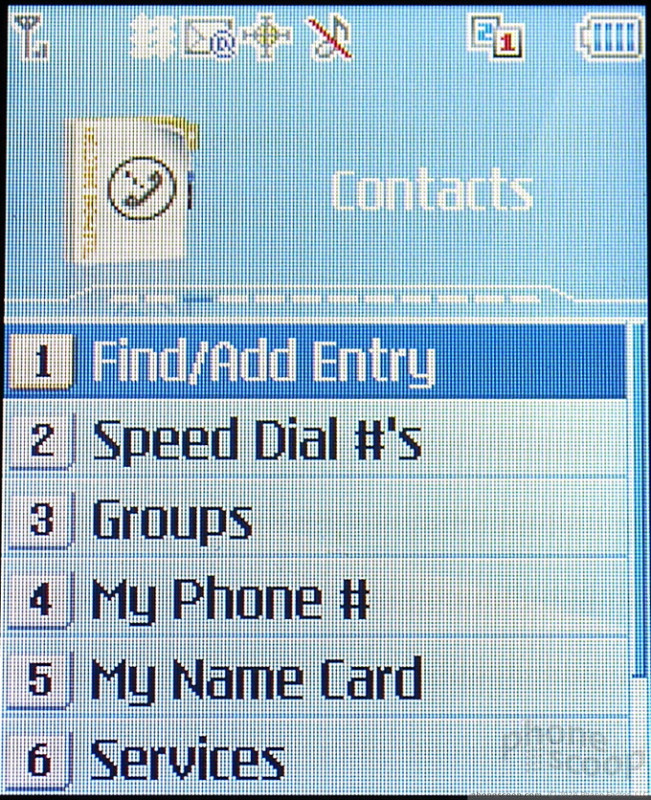




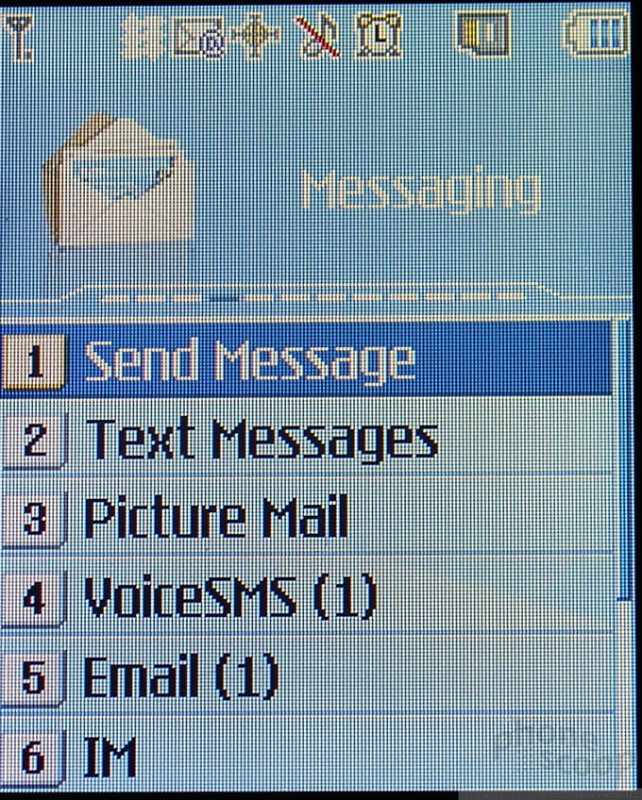







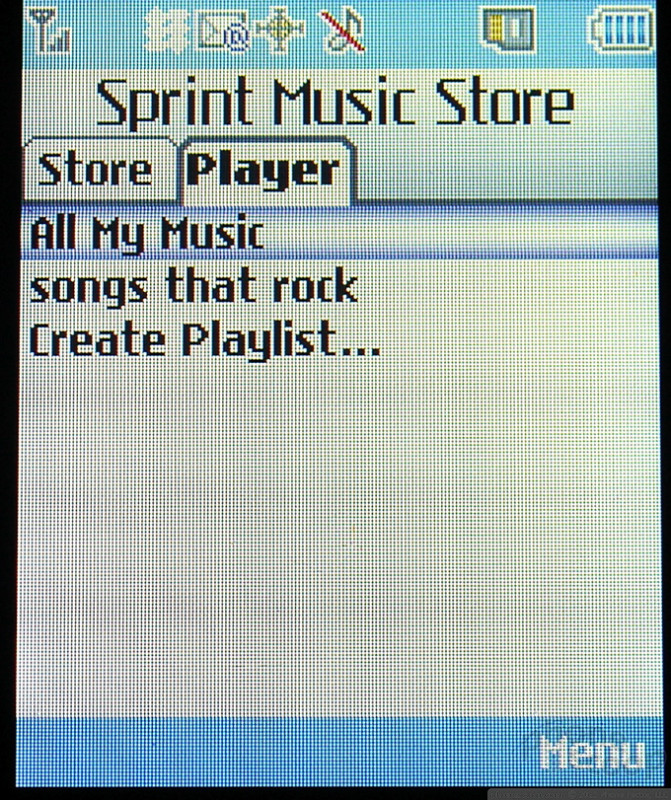






















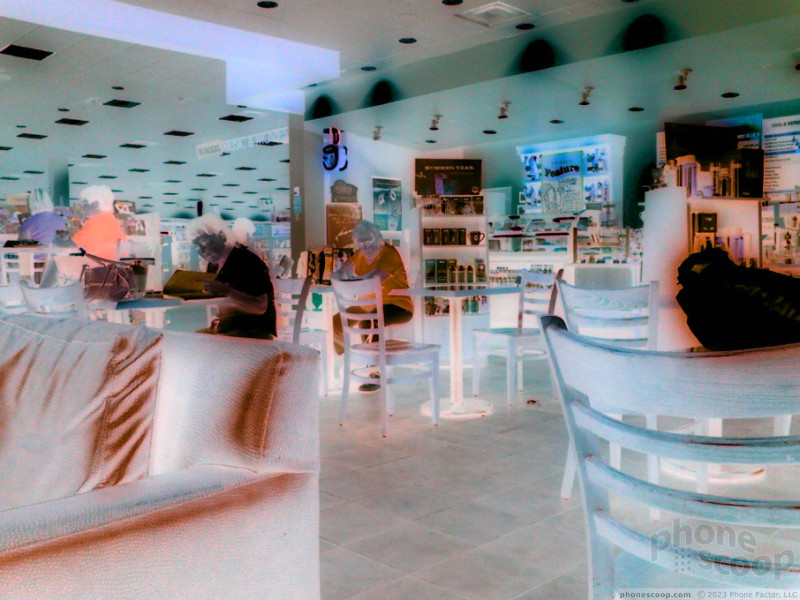







































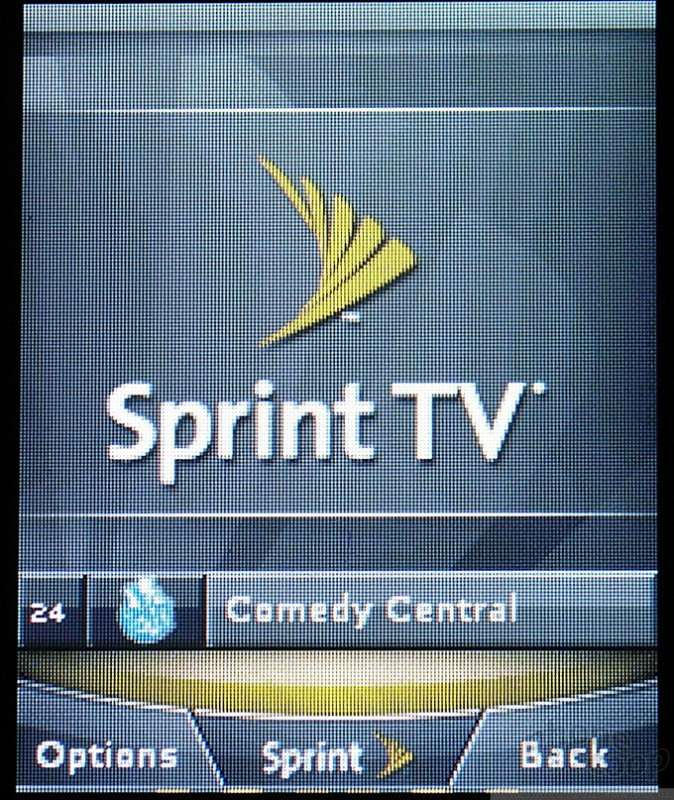




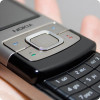 Summer 2007
Summer 2007
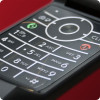 CTIA 2007
CTIA 2007
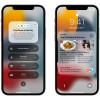 Apple Announces iOS 15
Apple Announces iOS 15
 iPhone 14 Plus Offers a Big Screen For Less
iPhone 14 Plus Offers a Big Screen For Less
 Samsung S24 Series Adds More AI, Updates the Hardware
Samsung S24 Series Adds More AI, Updates the Hardware


